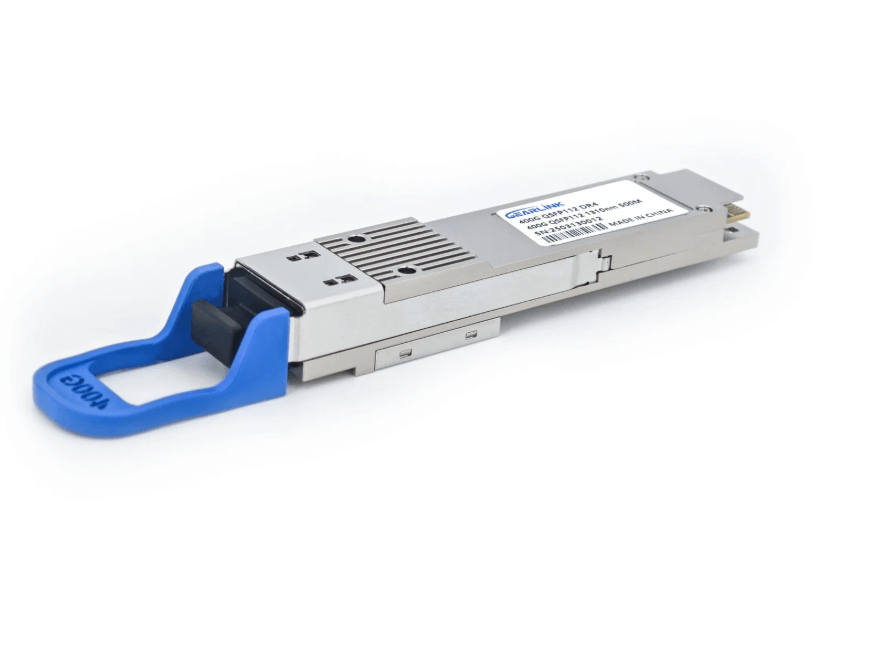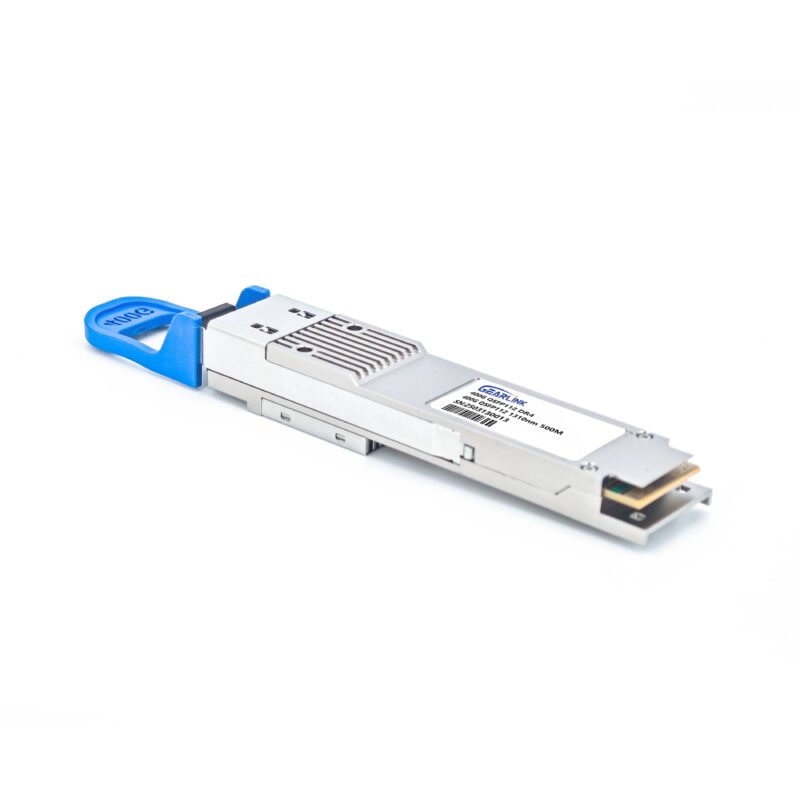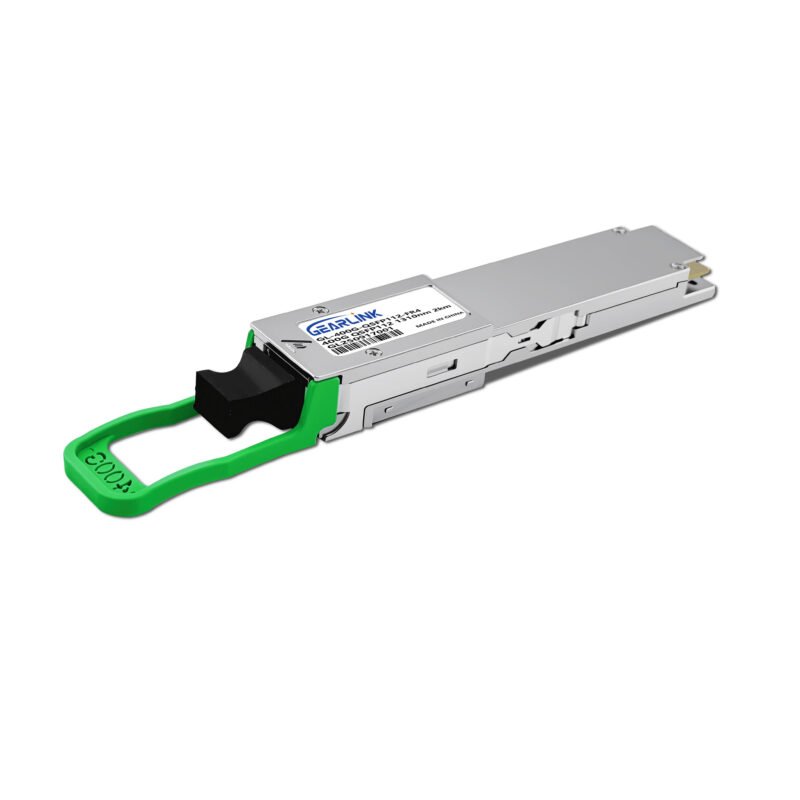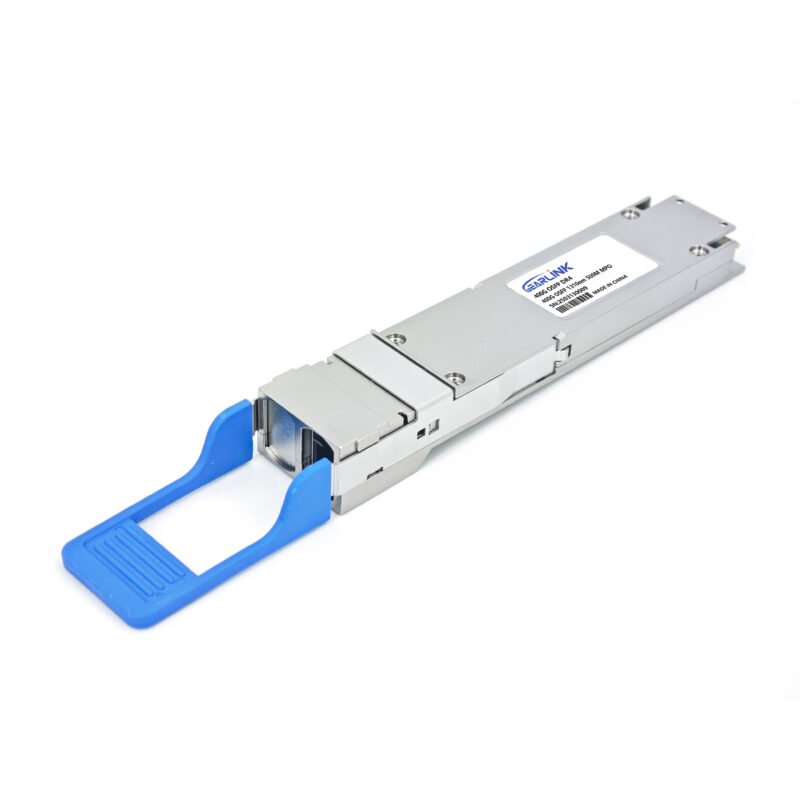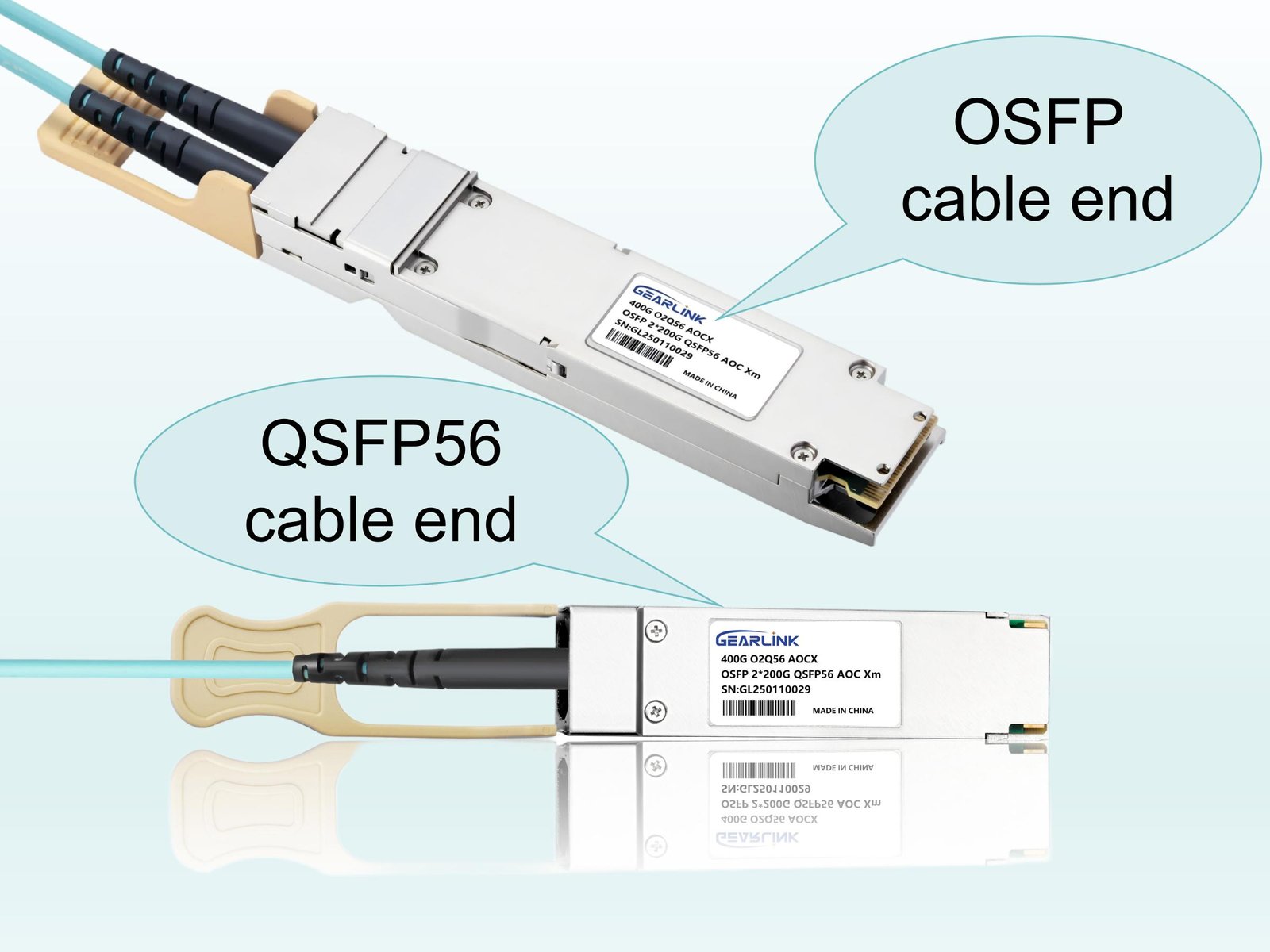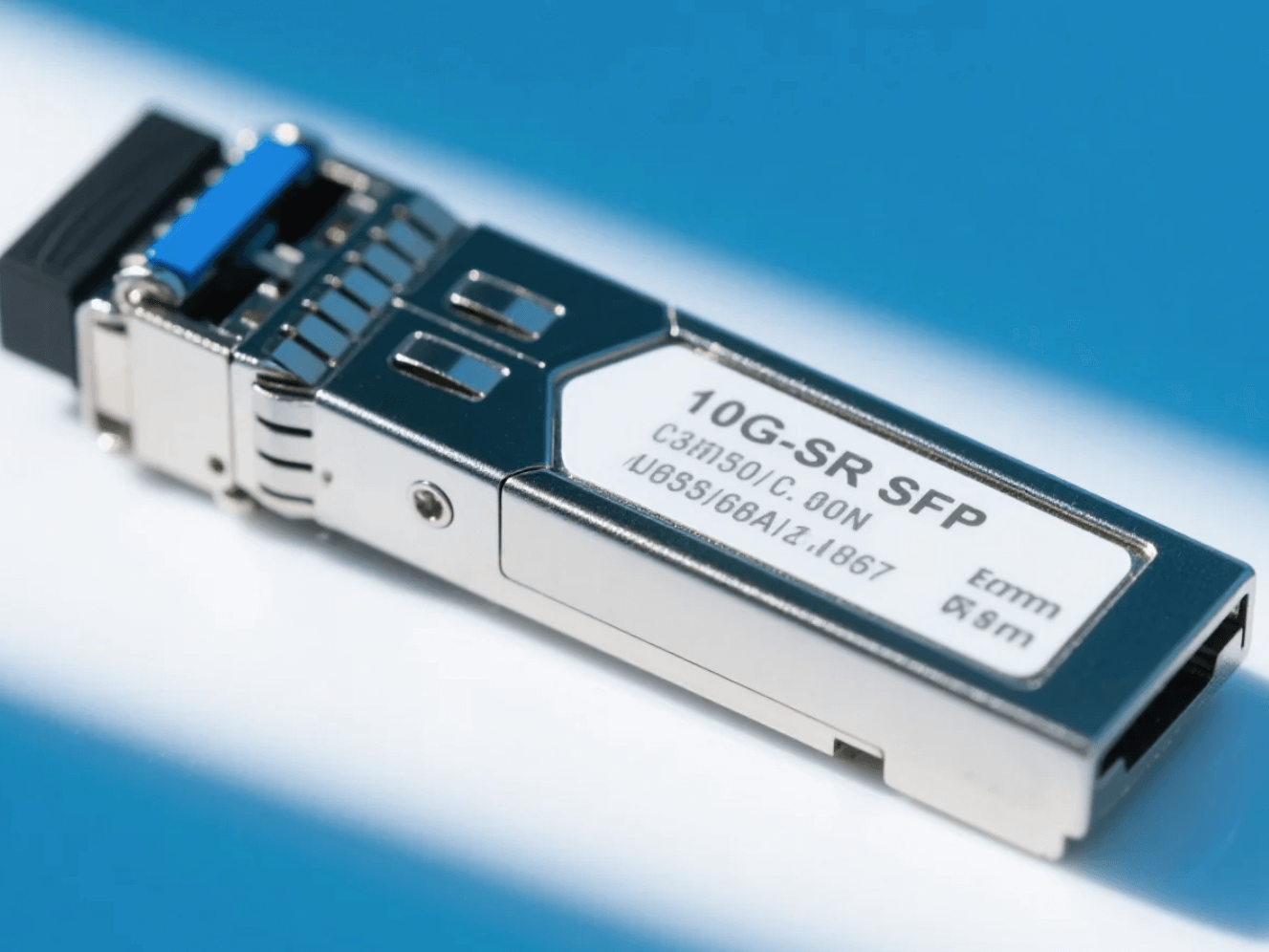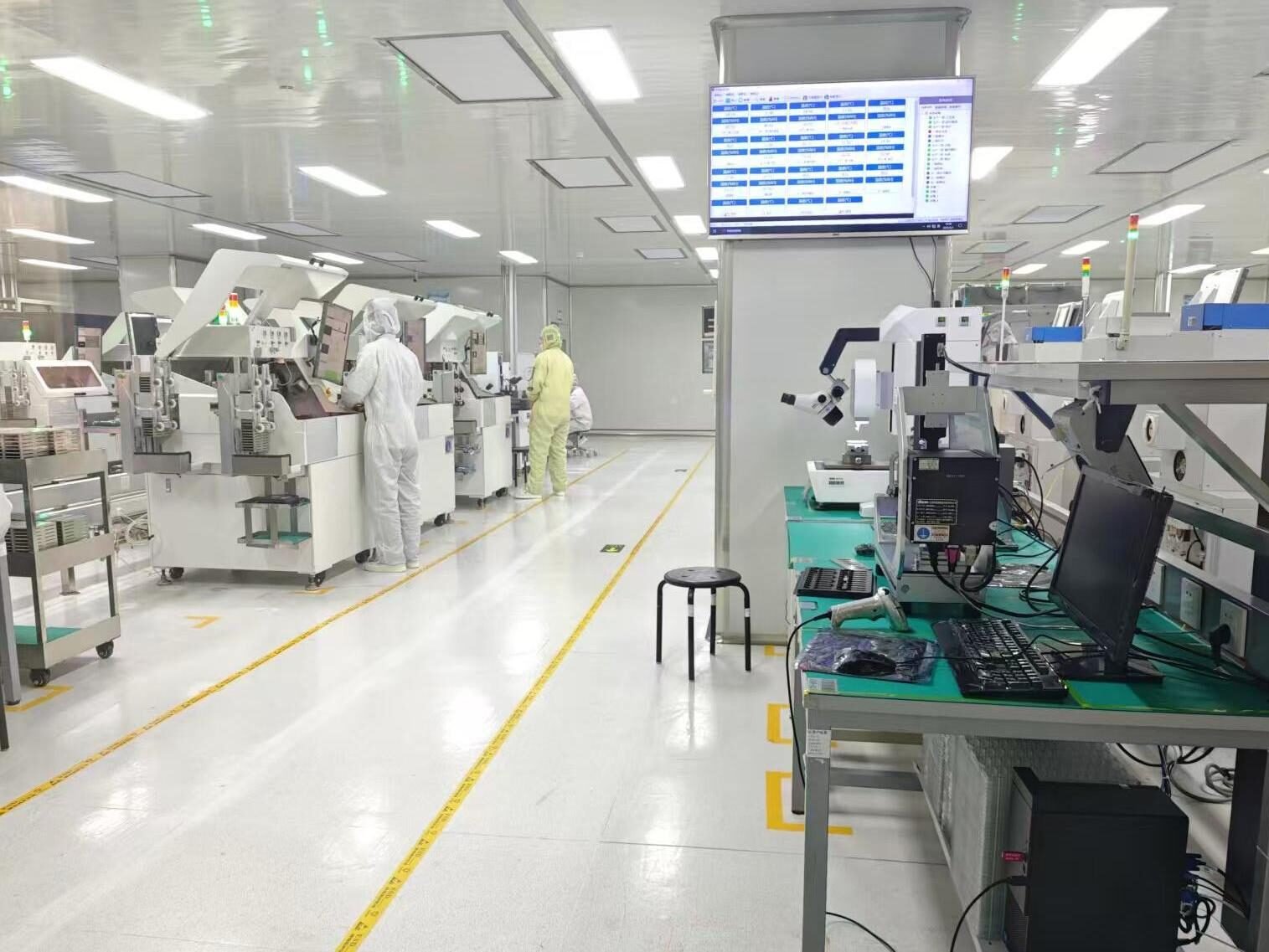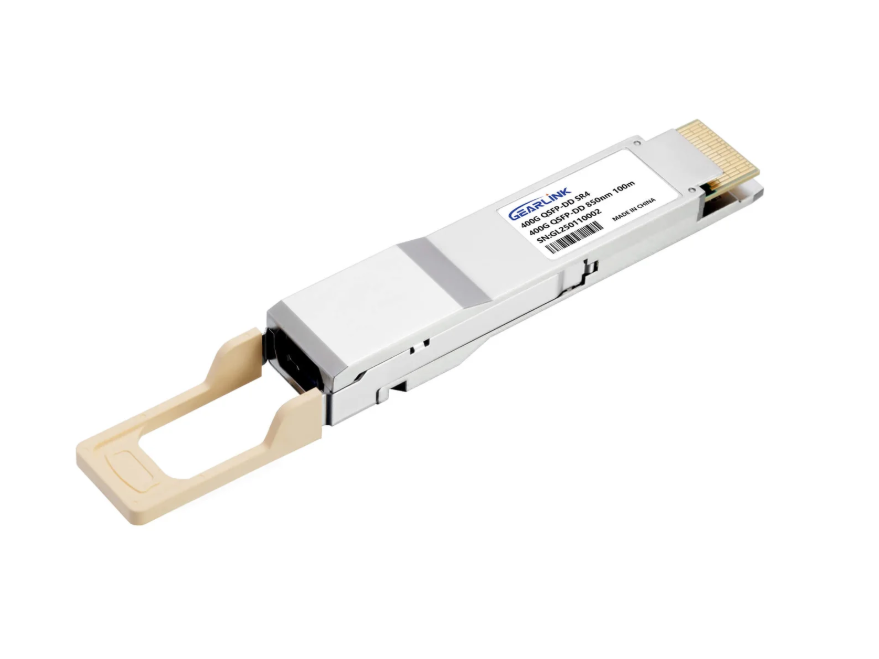The Genesis of a New Era: The Unmistakable Shift to 400G
The digital era is experiencing explosive growth in data driven by AI, ML, and HPC, pushing 100G and 200G networks to their limits. To meet rising demands for bandwidth and ultra-low latency, 400G connectivity has become a critical architectural shift rather than a simple upgrade. At the center of this transition, the 400G QSFP112 DR4 optical transceiver delivers high performance, efficiency, and cost-effectiveness within the proven QSFP form factor, making it a key enabler of next-generation data center networking.
The adoption of 400G as an architectural imperative is a direct response to a major shift in network traffic patterns. Traditional data center network design, based on a three-tier model of access, aggregation, and core layers, was optimized for “north-south” traffic, where data primarily flows between a client and a server. However, modern cloud and HPC applications are characterized by dominant “east-west” traffic, where data moves laterally between servers and virtual machines. This shift necessitates a flattened network topology that ensures low and predictable latency between any two points. Spine-leaf architecture directly addresses this need by reducing forwarding hops to a maximum of two, guaranteeing consistent performance across the fabric. The need for high-speed, high-density interconnections between the leaf and spine layers is where 400G technology becomes essential. The 400G QSFP112 DR4 is ideally suited for this role; its technical specifications, including a 500-meter reach and low power consumption, make it the optimal component for the short- to medium-range links that define a modern intra-data center spine-leaf fabric.
The Technological Underpinnings: Engineering for Efficiency
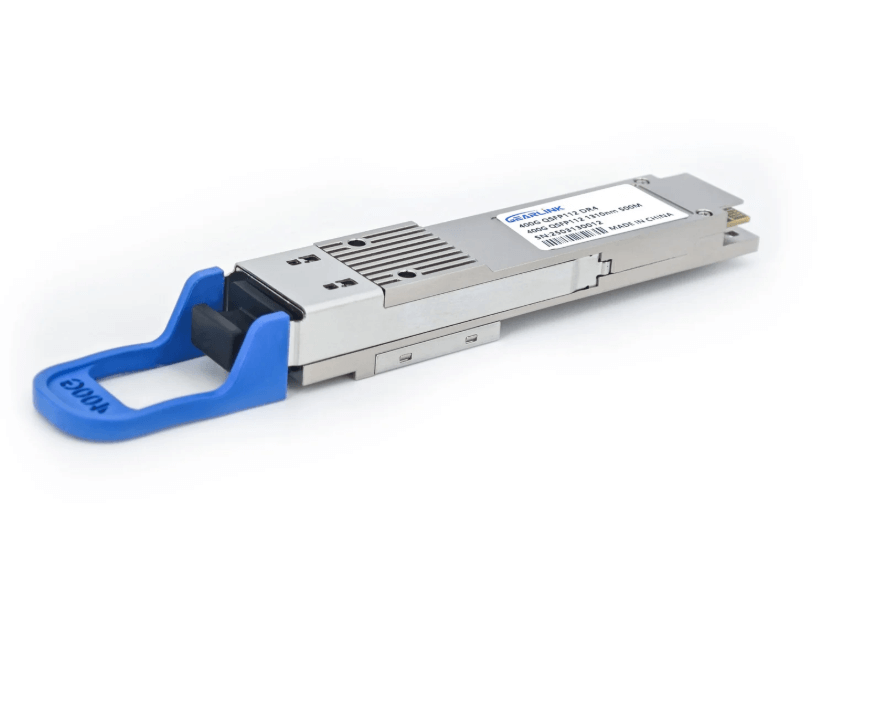
The defining characteristic of the 400G QSFP112 DR4 is its sophisticated electrical interface, which leverages four lanes of 100Gb/s signaling to achieve an aggregate data rate of 400Gb/s. This represents a fundamental architectural departure from earlier 400G solutions, which typically relied on eight electrical lanes of 50Gb/s. The shift to a higher single-lane speed is a critical step forward, aligning with the IEEE 802.3ck standard that defines the 100Gb/s electrical signaling standard and ensures interoperability for next-generation hardware.
To achieve 100Gb/s per electrical lane, the module employs Pulse Amplitude Modulation with 4 levels (PAM4). Unlike traditional Non-Return-to-Zero (NRZ) modulation, which encodes a single bit of data per symbol, PAM4 encodes two bits per symbol. This innovation effectively doubles the data rate without needing to double the physical signaling speed, thereby enabling the transmission of a massive amount of data over a simplified physical architecture. This is a crucial element of the 400G QSFP112 DR4’s high-efficiency design.
From a mechanical and optical standpoint, the 400G QSFP112 DR4 is a marvel of focused engineering. The module adheres to the QSFP112 Multi-Source Agreement (MSA), which guarantees consistent physical dimensions and electrical connections across different vendors. Its streamlined 4-channel design is a key feature, as it simplifies the internal signal routing and thermal management, which are major challenges at high speeds. Optically, the module operates at the 1310nm wavelength, a standard optimized for single-mode fiber (SMF). The “DR4” designation specifically indicates that it utilizes four parallel optical lanes to transmit data and is designed for a reach of up to 500 meters, making it ideal for intra-data center links. The module interfaces with a standard MPO-12 connector, which simplifies cabling and enables high-density deployments.
The direct connection between the 100G per-lane architecture and a lower total cost of ownership (TCO) is a powerful concept. By moving to a 4-lane design instead of the 8-lane design used by its predecessors like QSFP-DD, the number of high-speed electrical lanes is drastically reduced. This directly translates into fewer internal components, a simpler internal design, and most importantly, a significant reduction in power consumption. A reduction of up to 3.5 watts per module may seem insignificant on its own, but in a hyperscale data center with thousands of transceivers, the cumulative energy savings on electricity and cooling are immense. This directly impacts the operational bottom line and substantially reduces the data center’s environmental impact, reinforcing a commitment to sustainable growth.
A Strategic Advantage: Why 400G QSFP112 DR4 Redefines Value
400GBASE-DR4 QSFP112 PAM4 1310nm 500m DOM MPO-12/APC SMF Optical Transceiver Module
Price range: NT$669 through NT$799400GBASE-FR4 QSFP112 PAM4 1310nm 2km DOM Duplex LC/UPC SMF Optical Transceiver Module
NT$750
400GBASE-DR4 OSFP PAM4 1310nm 500m DOM MPO-12/APC SMF Optical Transceiver Module
Price range: NT$699 through NT$799
The streamlined four-lane electrical architecture of the 400G QSFP112 DR4 is its most compelling strategic advantage. This design leads to significantly lower power consumption—typically less than 9W to 10W—compared to other 400G module types. The reduction, which can be as high as 29%, directly lowers a data center’s operational expenditure (OpEx) related to power and cooling. This energy efficiency also aligns with the growing corporate and regulatory imperative to reduce carbon footprints.
Another major benefit is the module’s seamless migration path. The cost and complexity of replacing existing network infrastructure can be a significant hurdle to upgrades. The 400G QSFP112 DR4 addresses this by retaining the same QSFP form factor as legacy 40G, 100G, and 200G modules, providing inherent backward compatibility. This allows network operators to reuse existing cages and cabling systems, protecting their prior hardware investments and facilitating a smooth, cost-effective transition to 400G speeds.
A comprehensive analysis of 400G form factors reveals nuanced trade-offs for network operators. QSFP-DD, for example, doubles the number of electrical lanes to eight, which positions it as a versatile platform for future speeds like 800G. However, this increased density comes at the cost of higher power consumption and greater design complexity. OSFP, another contender, is slightly larger and includes an integrated heatsink, which offers better thermal management and future scalability. Yet, its larger size and lack of backward compatibility with the QSFP family present a significant drawback in many migration scenarios.
When evaluating these options, an interesting paradox emerges. Some market data shows that QSFP-DD modules may have a lower initial unit cost , which could lead some to view them as a cheaper solution. However, this is a narrow perspective. A professional’s decision is not based on the initial price tag but on the overall total cost of ownership (TCO). The lower power consumption of QSFP112 translates into thousands of dollars in annual energy and cooling savings for large-scale deployments. Furthermore, its seamless backward compatibility eliminates the substantial capital expenditure (CapEx) associated with replacing chassis and cabling. Thus, the module that appears slightly more expensive at first glance can, over its operational lifespan, prove to be the most cost-effective solution, embodying a correct and valuable approach to technology adoption.
| Parameter | QSFP112 DR4 | QSFP-DD DR4 | OSFP DR4 |
| Electrical Lanes | 4x100G PAM4 | 8x50G PAM4 | 8x50G PAM4 (or 4x100G PAM4) |
| Reach | 500m SMF | 500m SMF | 500m SMF |
| Power Consumption | <10W | <12W | <15W |
| Backward Compatibility | Yes (with QSFP/28/56) | Yes (with QSFP) | No |
| Key Advantages | Low power, compact, easy migration | Versatile, 800G ready | Better heat dissipation, 800G ready |
| Primary Application | Intra-data center, spine-leaf, HPC | Hyperscale data center fabric | High-performance, large-scale networks |
Real-World Applications in Modern Data Center Fabric
The 400G QSFP112 DR4 is perfectly aligned with the demands of the modern spine-leaf network architecture. Its 500-meter reach over single-mode fiber is a perfect match for the typical distances between leaf and spine switches within a single data center campus. This architecture’s reliance on Equal-Cost Multipath (ECMP) routing and its flattened design reduces forwarding hops and latency, a critical benefit for distributed, high-demand applications. The module provides the high bandwidth necessary to support the multi-path connectivity of the spine layer, ensuring high throughput and redundancy across the entire fabric.
One of the most valuable features of the 400G QSFP112 DR4 is its ability to support breakout connections. A single 400G port can be logically configured to operate as four independent 100G links, which can then connect to legacy 100G devices via an MPO-to-LC fanout cable. This functionality is invaluable during network migrations, allowing operators to scale up their core network while maintaining connectivity to a diverse range of servers and switches, all while dramatically increasing port density.
The strategic implications of breakout functionality extend far beyond a simple technical feature. By allowing one 400G port to service four 100G connections, it directly addresses the problem of limited port density in a 1U chassis. This means network operators can achieve a much higher server-to-switch ratio, reducing the number of switches required and, consequently, lowering capital expenditure. It also provides a smooth and flexible migration path; an operator does not need to replace all 100G network interface cards (NICs) at once. They can upgrade the spine switches to 400G and use breakout modules to connect to existing 100G leaf switches or servers, scaling out as needed without a disruptive, all-at-once replacement.
Beyond the core data center fabric, the module’s combination of high bandwidth, low latency, and energy efficiency makes it a perfect fit for specialized environments like HPC and AI clusters. In these settings, minimizing latency is of paramount importance for tasks like large-scale model training, where communication between compute nodes must be instantaneous. The low-latency benefits of the 400G QSFP112 DR4 are further enhanced by a new architectural trend: Linear-drive Pluggable Optics (LPO). By eliminating the power-hungry digital signal processor (DSP), LPO-based modules can reduce latency even further, to below 60 nanoseconds, a critical metric for optimizing AI workloads.
Navigating the Deployment Lifecycle: From Purchase to Operation
The proliferation of 400G modules has created a fragmented market with varying levels of quality. It is therefore imperative that network operators select modules that are fully compliant with Multi-Source Agreement (MSA) and IEEE standards. The deployment of non-compliant products can lead to a host of issues, including compatibility failures, signal integrity degradation, and overheating. Reputable vendors provide rigorous quality testing and adhere to these industry standards, ensuring seamless interoperability and long-term reliability.
Even with high-quality, standards-compliant modules, deployment can present challenges. One of the most common issues is overheating; despite the efficiency of QSFP112 modules, their high-density deployment can still pose a thermal challenge. Proper airflow and active temperature monitoring via digital diagnostics are essential preventative measures. Another prevalent problem is intermittent link instability, often referred to as “link flaps.” This can be caused by a variety of issues, including dirty connectors, excessive link loss, or configuration mismatches, and can often be identified by a sudden drop in received optical power.
Fortunately, the 400G QSFP112 DR4 is equipped with Digital Diagnostics Monitoring (DDM), which provides real-time access to critical operating parameters like temperature, voltage, and optical power. DDM is an indispensable tool for network operators, enabling them to proactively monitor the health of their links, identify potential issues before they cause downtime, and simplify troubleshooting.
The long-term cost implications of reliability and standards compliance cannot be overstated. An initial saving on a non-compliant, low-cost transceiver is quickly erased by the time and effort spent troubleshooting link flaps, dealing with premature module failures, and the cost of potential network downtime. The true value of a module lies not in its sticker price but in its reliability and the associated reduction in maintenance and operational overhead. This analysis underscores a crucial value system for network professionals: prioritizing quality and compliance over a low initial cost for a dramatically lower long-term TCO.
| Common Failures | Primary Symptoms | Key Diagnostic Tools & Solutions |
| Overheating | High temperature readings in DDM. Increased Bit Error Rate (BER). | Improve airflow and cooling. Check DDM for temperature alerts. |
| Link Flaps | Link alternates between up/down states. Intermittent connectivity. | Check switch logs and DDM. Inspect/clean fiber connectors. |
| Low RX Power | Low received optical power in DDM. High BER, link failure. | Inspect/clean connectors. Use an Optical Loss Test Set (OLTS). Ensure link distance is within specification. |
| Compatibility Issues | Module not detected by host device. Link fails to come up. | Verify module compatibility with the host vendor. Check firmware and software versions. |
| Connector Contamination | High BER, intermittent issues. | Use a fiber inspection microscope to check for dirt or damage. Clean thoroughly. |
The Future Horizon: A Look Ahead
The optical transceiver market is on a robust growth trajectory, with projections indicating it will reach over $25 billion by 2029. This expansion is fueled by the continuous scaling of hyperscale and edge data centers, as well as the increasing prevalence of AI and ML workloads. The adoption of 400G and 800G technologies is at the very heart of this growth.
While other form factors like QSFP-DD and OSFP are well-positioned for the future, including the eventual move to 800G and 1.6T speeds, the 400G QSFP112 DR4 is far from a technological dead-end. Instead, it is a crucial evolutionary step and a foundational component for the next generation of networking. The 100G per-lane technology it is based on is a clear stepping stone for future evolutions, with the potential for speeds to reach 224G per lane. The industry is also exploring revolutionary new technologies like Co-Packaged Optics (CPO) and Silicon Photonics to meet the long-term challenges of power consumption and density beyond 800G. CPO, in particular, aims to bring the optics much closer to the ASIC, with the potential to reduce power consumption by up to 50%.
While these future technologies hold immense promise, they are still in their early stages of widespread deployment and commercial maturation. The 400G QSFP112 DR4 represents the most pragmatic and value-driven solution for addressing today’s immediate scaling needs. It offers a powerful combination of backward compatibility, superior energy efficiency, and a proven, standardized design that solves current networking pain points. It is the ideal bridge technology that allows data centers to scale effectively now, without the added risk, cost, and complexity of waiting for next-generation platforms to become fully established.
Frequently Asked Questions
What is the difference between QSFP112 DR4 and QSFP-DD DR4?
The primary difference lies in their electrical interfaces: QSFP112 uses four 100G PAM4 lanes, while QSFP-DD uses eight 50G PAM4 lanes. This architectural distinction results in QSFP112 having lower power consumption and a more streamlined design.
How does the 100G per lane architecture benefit my network?
The 100G per-lane architecture significantly reduces the number of electrical components and connections, which in turn lowers power consumption. For network operators, this translates directly to lower operational costs from reduced electricity and cooling needs, as well as improved thermal management for the entire data center.
Is a host FEC system required for 400G QSFP112 DR4?
Yes, the 400GBASE-DR4 specification requires a host system to provide Forward Error Correction (FEC) to ensure reliable data transmission over the specified distance of up to 500m.
What are the power consumption benefits of QSFP112?
The QSFP112 form factor typically consumes 3.5W less power than its predecessor, a reduction of up to 29%. For hyperscale data centers, this is a critical factor for minimizing operational costs and reducing environmental impact.
Can a 400G QSFP112 DR4 module be used for 4x100G breakout?
Yes, the 400G QSFP112 DR4 is designed to support breakout configurations, allowing a single 400G port to be split into four independent 100G links. This significantly enhances port density and provides flexibility for connecting to legacy 100G devices.
Is 400G QSFP112 DR4 backward compatible?
Yes, it is backward compatible with legacy QSFP form factors like QSFP28 and QSFP56 , which allows for a smooth and cost-effective upgrade of existing infrastructure.
